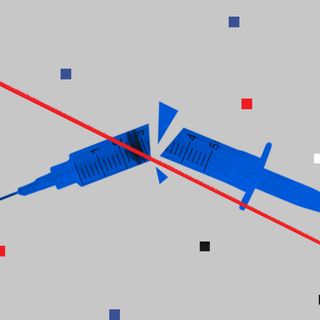Here’s a rather poetic idea. Person A and B have been together for 10 years. Their biologies converged in an uncanny rhythm; their blood pressure or cholesterol hitting the same markers or similar conditions ailing both partners. This is what a recent study shows — that long-term commitment in relationships trickles down to the very core of individuals, to the extent they develop biological similarities.
A more technical, even lyrical term for this phenomenon is “couple concordance in health.” The idea deals with couples’ physiology getting in sync the longer they stay in a relationship. “It’s like finishing each other’s sentences, but it’s your muscles and cells that are operating in sync,” NPR noted in a 2016 article.
The biology of couple concordance has two possible explanations so far. It speaks to the phenomenon of “assertive mating,” wherein people tend to couple with those who share physical characteristics. Studies also show people are attracted towards those with a similar ethnic or educational background; this would make the genetic similarities a result of coupling choice rather than the long-term relationship.
The second explanation is what the current study deals with. Published in Atheroscelorosis, the study looked at thousands of couples from Japan and the Netherlands who did not share any genetic commonalities. Instead, their “co-created” biological similarities were an organic product of shared lifestyle choices and routines that synchronized their health. In other words, the outcome of one’s health can be linked to a long-term relationship.
For instance, the long-term partners in the study were more likely to experience chronic conditions such as hypertension or diabetes together. Or that their cholesterol or blood pressure would be somewhat similar due to couples’ dietary and lifestyle patterns.
Health synchronization is by no means a novel idea. Previous studies have traced the likeness in couples’ health outcomes and its link to long-term relationships. For instance, a 2016 study looked at couples together for less than 20 years and couples together for more than 50. For the latter, the researchers found striking similarities in kidney function and cholesterol levels of couples who have spent decades together. The likeness is “something the couples co-created” over time, Shannon Mejia, a researcher at the University of Michigan and who took part in the study, told NPR.
“You’re in an environment together, and you’re appraising that environment together and making decisions together.” Mejia’s findings also referred to a 2011 study about similarities in long-term couples. Their experiences of either shopping for food or taking medicines were uncannily similar. These decisions about diets, exercise, and lifestyle significantly alter bodily compositions.
Related on The Swaddle:
Long‑Term Relationship Happiness Might Be Hard-Coded in Our DNA
It is a mixed takeaway that long-term relationships influence physiological health. Spending decades together may register a heavy toll on individual health for couples in unhappy relationships or toxic marriages. The 2011 study found the depression symptoms in couples improved or worsened in sync. Moreover, if one spouse felt more symptoms of depression, the other spouse felt physical limitations in performing daily tasks. This is understandable because if a partner refuses to leave the house, the other may automatically adapt to a more sedentary lifestyle, too — pushing health outcomes together.
For couples in happy relationships, however, this link can be a lovely idea. A study conducted in 2014 found when at least one partner had a naturally optimistic outlook, the likelihood of developing arthritis and diabetes was relatively low in both partners.
Moreover, individual partners’ health information can further form pieces of the puzzle about identifying and treating health conditions as partners grow old. Say, if a partner experiences muscle weakening or kidney trouble, it may indicate similar problems for the other due to the co-created health choices of long-term couples. In sickness and in health, the puzzle can prompt early health interventions.
As writer Lindsay Peterson noted in NPR: “When a spouse comes in with a problem, the other spouse could be part of the cause — or the solution.”




